Upper Back Belts: Fashion Meets Functionality

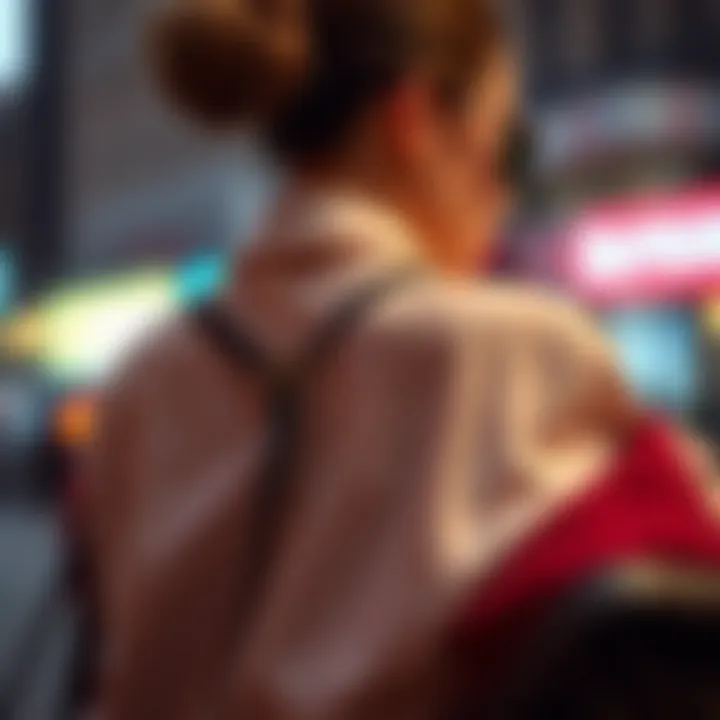
Intro
The integration of upper back belts into modern fashion is more than just a fleeting trend; it's a reflection of evolving aesthetics and practical needs in the clothing industry. As individuals navigate through various aspects of their lives—from professional to casual settings—the importance of comfort and style has never been clearer. Upper back belts have positioned themselves uniquely within this sphere, not only improving posture but also serving as stylish statements in diverse outfits. In a world increasingly attuned to wellness and sustainable choices, these accessories offer a blend of functionality and flair that can no longer be overlooked.
This article dives into the core elements that define upper back belts and their role in fashion today. We’ll examine current fashion trends, explore sustainable practices, and analyze how these belts cater to both individual needs and broader fashion landscapes. This journey will help uncover the layers of thought behind each choice in style and design, making it clear that upper back belts have become indispensable to both fashion enthusiasts and conscientious consumers alike.
Fashion Trends
Current Seasonal Trends
Every season ushers in a fresh wave of styles and expectations within the realm of fashion. Upper back belts have made profound strides in the current seasonal trends. The emphasis this year seems to be on versatility and adaptability:
- Layering Techniques: Designers are increasingly showcasing upper back belts as key components for layering, allowing them to be worn over jackets, dresses, or even sweaters.
- Color Palettes: Striking hues like mustard yellow and deep greens are making their mark, and these shades frequently find their way into upper back belts, providing an opportunity to enhance outfits with a pop of color.
- Material Innovation: From vegan leather to organic cotton, the materials used in creating these belts are evolving. This reflects the trend towards minimalism and sustainability that many consumers are seeking.
Influential Style Icons
The culture of fashion is often shaped by charismatic figures who set trends for both the masses and the niche audiences. With regard to upper back belts, several renowned fashion icons have brought them to the forefront:
- Rihanna: Known for her eclectic style, Rihanna’s fondness for statement upper back belts has made it trendy among a younger audience. Her ability to mix high and low fashion has inspired countless fans to adopt this accessory into their wardrobes.
- Harry Styles: Pushing against conventional gender norms, Styles manages to blend upper back belts into both masculine and feminine looks, proving their inclusivity and versatility.
- Pharrell Williams: His unique take on fashion illustrates how upper back belts can enhance casual outfits without compromising on elegance. His designs often feature bright fabrics and playful patterns, attracting an audience eager for vibrant style.
“Fashion is the armor to survive the reality of everyday life.” – Bill Cunningham
The influence of these icons demonstrates just how upper back belts can redefine personal expression and identity in an ever-modernizing world.
Sustainable Practices
Eco-friendly Fabrics
Today's consumers are more aware of their choices than ever before. Upper back belts are no exception in this quest for sustainability. The emergence of eco-friendly fabrics has paved the way for these accessories to align with environmental values. Fabrics like Tencel and recycled polyester are being used to manufacture stylish designs without harming the planet. By favoring these materials, brands show their commitment to reducing waste and making responsible fashion choices that resonate with eco-conscious shoppers.
Ethical Fashion Brands
Several brands stand out for their dedication to ethical practices in the creation of upper back belts:
- Reformation: This brand is known not only for its trendy styles but also for its transparency in sourcing. Their commitment to sustainability has made them a leader among eco-friendly fashion consumers.
- Patagonia: While primarily known for outdoor clothing, they have started incorporating upper back belts made from recycled materials, promoting both function and sustainability.
- Amour Vert: Their mission is to create fashion that is both stylish and sustainable, and this ethos reflects in their production of belts that cater both to looks and environmental well-being.
For those interested in sustainable living and fashionable choices, upper back belts provide an opportunity to marry style with ethics. As these practices become more prevalent, the conversation about how we perceive fashion continues to evolve, ensuring that every piece of clothing contributes to something larger than just aesthetics.
Prologue to Upper Back Belts
In the ever-evolving landscape of fashion, accessories often play second fiddle to clothing staples, yet some items elevate their role from mere embellishments to essential components of a wardrobe. Upper back belts have emerged as a distinct example of this shift. The role these belts play in supporting posture, providing comfort, and enhancing style proves their relevance in the realm of contemporary fashion.
Upper back belts do more than hold an outfit together; they serve crucial functional purposes that are often overlooked. They offer the promise of improved posture, which can significantly affect the way one carries oneself. This isn’t just a matter of aesthetics; improved posture has far-reaching implications for overall health and well-being. Moreover, given today’s busy lifestyle, where individuals often find themselves glued to screens for hours, integrating such functional elements into fashion is more pertinent than ever.
On the aesthetic side, upper back belts are a stylish statement, capable of transforming an ordinary outfit into something unique. They come in various designs, colors, and materials, enabling wearers to express their individuality. When paired thoughtfully, they enhance visual appeal while still serving their functional benefits.
As we dive deeper into the specifics of upper back belts, we will explore their various definitions, their historical context, and how they have evolved to become integral parts of modern fashion. Understanding these elements will help illuminate how upper back belts are not mere trends, but essential fixtures in functional fashion.
Defining Upper Back Belts
Upper back belts are accessories designed to fit around the upper torso, typically positioned just above the waist. Their primary function is to provide support to the back, helping to correct posture and alleviate discomfort. Different from traditional belts that are primarily ornamental, these belts often incorporate various materials and technologies aimed at enhancing support and stability.
In the marketplace, upper back belts can vary significantly in design. Some are sleek and minimal, crafted from leather, fabric, or even high-tech synthetics equipped with compression capabilities. Others might be more fashion-forward with embellishments or patterns aimed at enhancing their aesthetic appeal. Regardless of the design, the core function remains the same: they aid in holding the upper body in a naturally aligned position.
Historical Context
The use of supportive garments is not a modern innovation. Historical records indicate that various cultures have utilized back support in one form or another, dating back to ancient civilizations. For instance, back braces and corsets were popular in past centuries, primarily among women, serving both functional and stylistic roles.
As time progressed, the perception of back support evolved. The late 20th century saw a shift toward more comfortable, less restrictive alternative styles that prioritized both fashion and function. The advent of new materials and design technologies in the late 20th and early 21st centuries set the stage for what we recognize today as upper back belts.
In this transition, cultural influences and shifts in consumer preferences have also played crucial roles. As health awareness grew, so did the demand for products that not only look good but also promote wellness. Today, many fashion-forward consumers actively seek out upper back belts not just for their visual appeal, but for the benefits they offer to physical health.
This critical glance back into the history of upper back belts underscores their lasting importance in both fashion and function. As we explore further into their functional benefits and fashion perspectives in the sections to come, it becomes clear that upper back belts are much more than a mere accessory; they are markers of a changing understanding of health and style in the contemporary world.
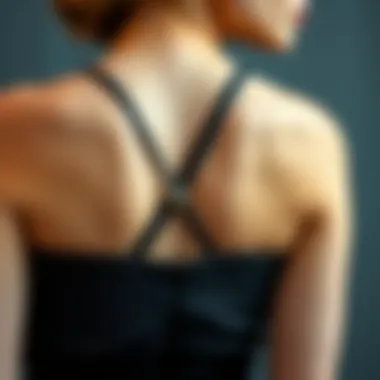
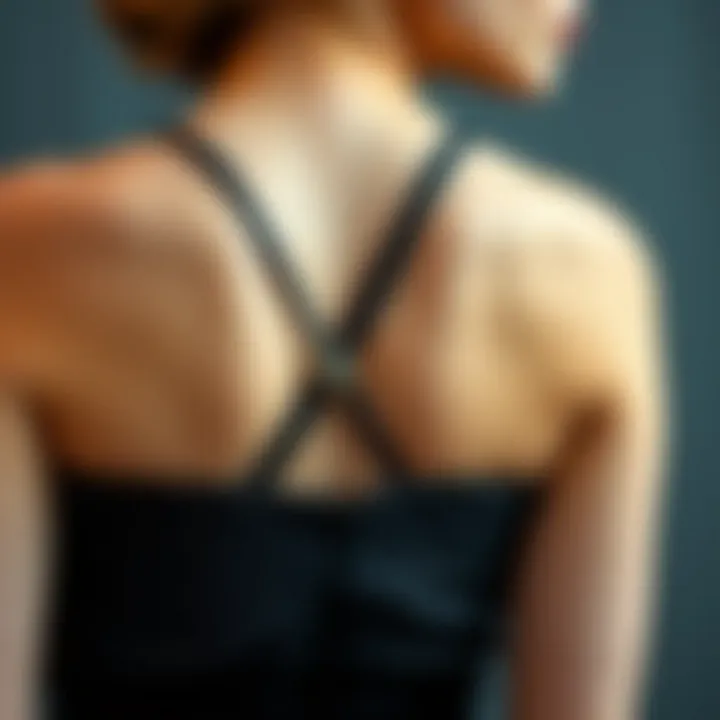
Functional Benefits of Upper Back Belts
Upper back belts serve as more than just a fashion statement; they play a crucial role in enhancing well-being through various functional benefits. In today’s fast-paced world, the intersection between health and style is more relevant than ever. Understanding how upper back belts can provide tangible advantages can enrich the choices made by fashion enthusiasts, designers, and consumers alike.
Posture Support
One of the most prominent benefits of upper back belts is their ability to provide posture support. With many individuals spending hours hunched over computers or mobile devices, good posture often takes a back seat. Enter the upper back belt. This accessory gently encourages the wearer to maintain an upright position, acting like a gentle reminder to straighten up. By supporting the thoracic spine, it can promote better alignment, reducing the strain on muscles and ligaments.
It’s not uncommon to find individuals feeling the effects of slouching—back pain, discomfort, and fatigue are all side effects of poor posture. By incorporating an upper back belt into one’s wardrobe, individuals can potentially mitigate these issues, leading to both physical and mental benefits. A solid approach to posture enhancement could involve:
- Understanding your body: Knowing your alignment helps in choosing the right belt.
- Routine adjustments: Regularly wearing the belt can help develop a habit of maintaining good posture.
- Consulting professionals if needed: Physical therapists can provide insight into whether a specific style suits individual needs.
Pain Relief and Prevention
Alongside improving posture, the role of upper back belts in pain relief is noteworthy. For those who suffer from chronic back pain or find themselves frequently experiencing discomfort during daily tasks, these belts can prove invaluable. They provide compression and support to strained muscles, which in turn, may alleviate pain.
When donned correctly, an upper back belt helps by:
- Reducing muscle fatigue: The support minimizes the stress on muscles that are overworked.
- Encouraging proper body mechanics: This can lead to a smoother range of motion, decreasing the likelihood of injury.
- Promoting recovery: For individuals recovering from injuries, wearing the belt can minimize the risk of re-injury.
Often, people remain unaware of their posture until pain becomes apparent. An upper back belt acts as a preventive measure, looking out for the wearer's long-term health.
Enhanced Physical Performance
Athletes and fitness aficionados view upper back belts as tools for enhanced physical performance. When it comes to activities requiring robust upper body strength, these belts can provide much-needed stability. They can help keep the muscles engaged properly, especially during workouts, ensuring that the wearer is maximizing their potential.
Here’s how upper back belts can potentially enhance physical performance:
- Stabilization: It keeps the shoulders aligned, allowing for a more effective and dynamic workout.
- Injury prevention: By supporting the back during rigorous activities, one can decrease the risk of strain or overextension.
- Enhanced endurance: With the right support, individuals may find themselves able to push through workouts longer and harder.
“The integration of an upper back belt in workout routines may very well tip the scales in favor of athletes striving for peak performance.”
In summary, upper back belts present themselves as multifaceted accessories that transcend mere aesthetics. They provide essential support for posture, alleviate discomfort, and can enhance physical performance. As the lines between fashion and wellness continue to blur, these belts are poised to play pivotal roles in modern wardrobes.
Fashion Perspectives on Upper Back Belts
With the ever-evolving landscape of fashion, upper back belts have carved out a niche that goes beyond mere functionality. They serve as an intersection of support and style, influencing how we view and wear clothing in our daily lives. In this section, we will delve into the different ways these accessories integrate into outfits, their versatility in style, and how designers are pushing the boundaries of what upper back belts can be. The importance of examining the fashion perspectives surrounding upper back belts reveals the ways in which they shape personal expression while serving practical needs.
Integration into Outfits
Integrating upper back belts into outfits can transform a basic look into something strikingly chic. They can be layered over blazers for a polished vibe or styled under dresses for a subtle yet effective approach to posture support. The adaptability of these belts allows them to complement various types of attire. From casual denim jackets paired with an athleisure look to more formal dresses accentuating the waistline, upper back belts make their presence felt in multiple contexts.
Moreover, the color palette and design of these belts allows for personalization. A metallic upper back belt can add a hint of glam to an otherwise understated outfit, while a fabric option in bold patterns can stand out as a statement piece. These belts thus not only provide physical benefits but also act as a canvas for creative expression, allowing wearers to align their accessories with their personal styles.
Style Variations
The world of upper back belts is rich with variation— from wide, structured options to sleek, minimalist styles. A wide belt might evoke a sense of boldness and confidence, enhancing the visual impact of an outfit. In contrast, a narrower style can create an elegant silhouette without overwhelming the wearer. These variations cater to different body types and fashion sensibilities, giving everyone a chance to find the perfect fit.
Visitors to fashion-forward stores will often notice that some upper back belts are crafted with innovative designs, such as those featuring interesting buckle mechanisms and adjustable sizing. Items like Vivienne Westwood's unique creations or the latest from Gucci make use of fresh materials and unexpected patterns, sparking trends that resonate deeply with contemporary consumers.
- Bold Styles include:
- Minimalist Options encompass:
- Structure-driven designs
- Attention-grabbing colors
- Soft, simplified aesthetics
- Neutral shades for versatility
These options enhance not just appearance but also offer insight into the wearer's lifestyle and values. Whether in high fashion runways or casual street style, upper back belts are becoming increasingly evident in closets everywhere.
Influence of Designers
The influence of designers brings an international flair to upper back belts. High-fashion houses are incorporating these accessories into their collections, elevating them beyond functional pieces into must-have items. Creative minds such as Alexander Wang or Maison Margiela experiment with form and function, pushing consumers to reconsider how these items are perceived.
"Designers are redefining the narrative around upper back belts, transforming them into dynamic elements of fashion that challenge traditional perspectives."
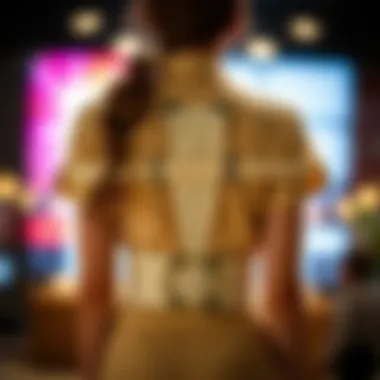
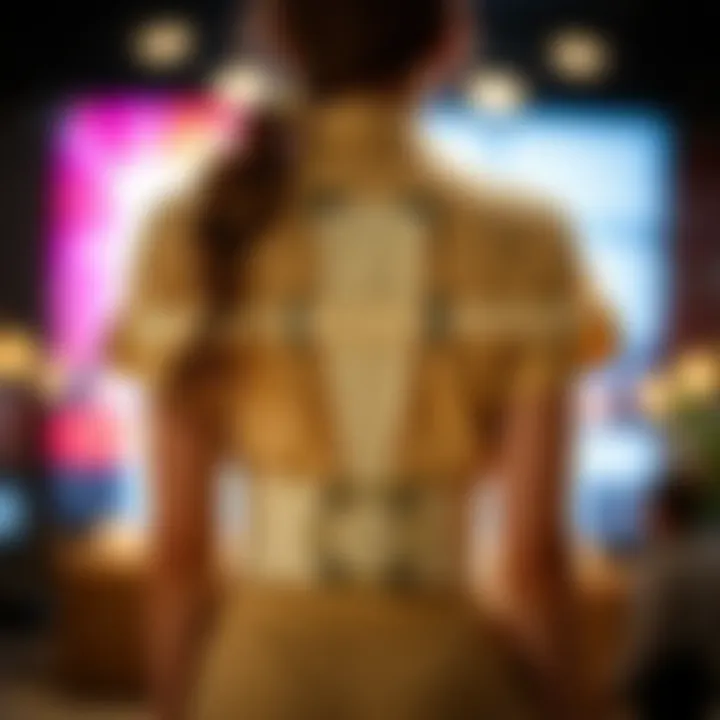
Additionally, collaborations with mainstream brands often bring exotic designs into more accessible markets. These pieces harness innovative materials alongside sustainable practices, appealing to ethical considerations among modern shoppers. As brands merge style with practicality, they drive a narrative that encompasses well-being and fashion consciousness.
In essence, the growth of upper back belts in fashion reflects broader shifts in consumer attitudes— a desire for products that encapsulate both form and function, without compromising chicness. With the right integration and the eye for style variations, upper back belts are set to continue their ascendancy in the wardrobe essentials of fashionable individuals.
Materials Used in Upper Back Belts
Understanding the materials used in upper back belts is crucial to appreciating their role and impact in fashion today. The fabric choices not only influence their aesthetic appeal but also affect functionality, comfort, and durability. As fashion evolves, the demand for belts that are not just stylish but also serve specific purposes grows. It’s a balancing act between form and function that designers and consumers alike must navigate.
Natural vs Synthetic Fabrics
When it comes to materials, one faces the ongoing debate between natural and synthetic fabrics. Natural materials like cotton, leather, and wool have been favored for their breathable characteristics and tactile appeal. For instance, leather offers a classic touch and durability that many fashion enthusiasts appreciate. It ages beautifully, developing a unique patina over time. Cotton, being soft and lightweight, ensures comfort, particularly for those who wear upper back belts all day.
On the other hand, synthetic materials such as polyester and nylon have their own merits. They are often more resistant to wrinkles and stains, an appealing trait for busy lifestyles. Plus, advances in textile technology have allowed for the creation of lightweight, breathable synthetic fabrics that mimic the feel of natural fibers without the drawbacks.
In a world striving for sustainability, it’s noteworthy that innovative designs are emerging. Many brands now blend both natural and synthetic fibers to achieve a balance that satisfies aesthetic and functional demands while considering environmental impact. Such hybrid materials can enhance performance, like moisture-wicking properties, desirable for active wear and improving overall user experience.
Durability Considerations
Durability is another key factor when it comes to selecting upper back belts. The choice of material directly impacts how well a belt can withstand daily wear and tear. A robust belt can make all the difference, especially in urban settings where daily activities range from commuting to socializing. A well-made belt should last through all these experiences without showing significant signs of wear.
For instance, a cotton belt may be comfortable, but it may not stand the test of time as well as a leather or reinforced synthetic belt. Moreover, belts constructed from high-quality materials often provide additional layers of support and structure, maintaining their form while assisting the body’s alignment.
A few points to consider:
- Resilience Against Stretching: Materials that retain shape despite repeated use are indispensable.
- Care Requirements: Natural fabrics often need more maintenance, while synthetic options might simply be machine washable.
- Environmental Impact: The sourcing and production of material play roles in sustainability efforts. Bamboo and hemp are garnering attention for being eco-friendly alternatives.
"Choosing the right material is like selecting a partner; it needs to support your lifestyle without compromising on style."
Sustainability in Upper Back Belt Production
As we continue to navigate through a world where conscious consumption is becoming increasingly important, the sustainability of upper back belts has carved out a space in modern fashion discussions. No longer just accessories for style, upper back belts are finding their identity through the lens of environmental consciousness.
When one talks about sustainability in fashion, it’s paramount to consider how materials are sourced, the environmental impact of production processes, and the overall lifecycle of products. With fast fashion being a major contributor to environmental degradation, the focus on sustainable practices becomes essential. In the context of upper back belts, companies that are committed to sustainability underscore a commitment not just to fashion, but also to the well-being of our planet.
Eco-Friendly Materials
Today's consumers are increasingly savvy about the materials used in the products they purchase. This trend has pushed manufacturers to explore eco-friendly materials for upper back belts. Here, we aren’t just talking about recycling leftover fabrics; we are looking at innovations that are transforming the industry.
For instance, brands have started using bamboo fibers, which are not only biodegradable but also require tiny amounts of water compared to traditional cotton. Additionally, materials like organic cotton, hemp, and recycled polyester are leading the charge towards sustainable production. These materials help in reducing waste and conserve resources, making a stronger case for consumers who’re passionate about environmental issues.
There’s also a growing emphasis on the lifecycle of these materials. A belt made from sustainable components not only looks good but often contributes to a better life cycle management system. This means that consumers can wear their belts with pride, knowing that they are part of a movement towards reducing fashion's ecological footprint.
"Switching to eco-friendly materials is not just a trend, but a necessity in the evolving fashion landscape."
Ethical Production Practices
The conversation around sustainability in upper back belt production wouldn’t be complete without acknowledging ethical production practices. It's not enough for the materials to be green; the way these belts are produced plays a crucial role too. Many brands are now prioritizing fair trade practices, ensuring that workers involved in the production process are treated well and compensated fairly.
Ethical production encompasses various elements, such as:
- Fair wages: Ensuring that every worker receives a living wage.
- Safe working conditions: Protecting the health and safety of all workers.
- Transparency: Offering consumers insight into the supply chain to build trust upon their purchase.
Moreover, as fashion enthusiasts increasingly seek brands with integrity, those with ethical practices are likely to stand out in a crowded market. This shift is not merely an ethical necessity; it's becoming a compelling differentiator that can significantly influence purchasing decisions.
In summary, the sustainability of upper back belt production stands at the intersection of innovative material use and ethical manufacturing practices. As the fashion landscape continues to evolve, it is clear that brands adopting these practices will not only resonate with the eco-conscious consumer but also pave the way for a more responsible future in fashion.
Consumer Considerations
When diving into the world of upper back belts, it’s essential for consumers to consider several factors that directly impact their choices. These choices can influence not only the functional utility of the belt but also how they align with personal style preferences. The right decision can significantly enhance both comfort and fashion appeal.
Choosing the Right Upper Back Belt
Selecting an upper back belt isn’t just about picking a pretty design. It’s key to consider its intended use. For instance, some belts prioritize support for individuals with back pain, while others focus more on aesthetic appeal for trendy outfits. Some of the points to ponder include:
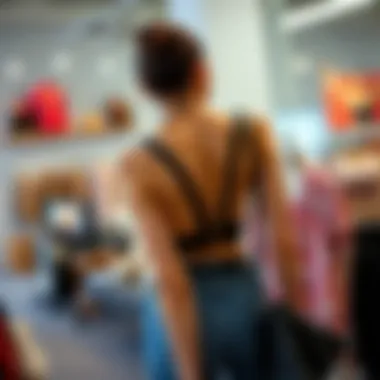
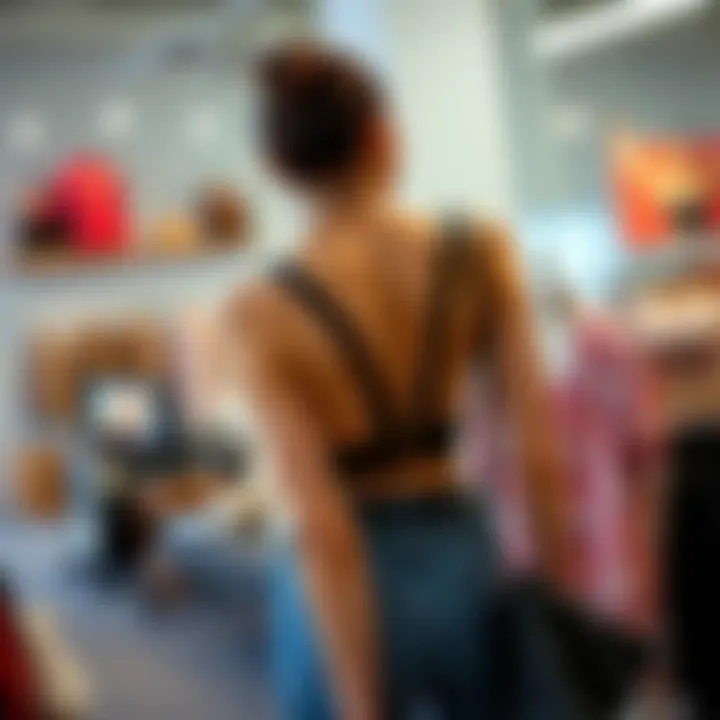
- Purpose: Are you looking for support during workouts or want an accessory for casual wear?
- Material: Opting for breathable materials like cotton blends can enhance comfort, while those seeking durability might lean towards synthetic fabrics.
- Style: From sleek and minimalistic to bold patterns, the available designs are vast. Your personal taste should guide this choice.
- Brand Reputation: Some brands are renowned for their focus on quality and innovation. Familiarize yourself with reviews and recommendations.
Paying attention to these factors plays a crucial role in ending up with a belt that not only fits well but feels good too.
Understanding Sizing and Fit
Another vital consideration is sizing. Upper back belts typically come in various sizes, and finding the right fit is crucial to maximize their benefits. A belt that's too tight can cause discomfort and even exacerbate back issues, while one that is too loose might not provide sufficient support. Here’s how to get it right:
- Measure Your Waist: Most brands provide a sizing guide. An accurate waist measurement can help determine the best fit.
- Adjustability: Look for belts that feature adjustability options, allowing you to customize the fit as per your comfort.
- Try Before You Buy: If possible, try on different sizes and styles. This can give you a better feel for what works suits you when you walk around.
A proper fit contributes not only to effectiveness but also to the overall appearance of the belt when worn.
Care and Maintenance
To keep your upper back belt looking fresh and functioning well, appropriate care and maintenance are essential. Here are some considerations:
- Washing Instructions: Always check the label for specific care instructions. Many belts are machine washable, but some may require hand washing to retain their shape.
- Storage: Store your belt in a cool, dry place away from direct sunlight, which can damage the materials over time.
- Inspection: Regularly inspect for wear and tear, especially if you use it during physical activities. Look for fraying edges or loosening stitching.
By keeping these tips in mind, you can extend the life of your upper back belt and ensure it remains a staple in your wardrobe.
Remember, the right belt is not just a purchase; it’s an investment in your style and well-being. Being mindful about what to look for enhances your overall experience.
The Future of Upper Back Belts
As the world of fashion continues to evolve, staying ahead of the curve demands an understanding of emerging trends and innovations. Upper back belts are not merely accessories; they represent a nexus of style, support, and functionality. Their future is set against a backdrop of increasing consumer awareness toward health, sustainability, and adaptable fashion. It is essential to explore what lies ahead for these belts to fully appreciate their contribution to modern wardrobes.
Emerging Trends
In the realm of upper back belts, several trends are beginning to shape their design and application. Firstly, the fusion of fashion with health awareness is becoming more pronounced. As individuals prioritize well-being, belts that offer both style and support are gaining traction. They are no longer just a means to cinch a waist; they have become essential tools for maintaining posture and comfort in a fast-paced world.
Another notable trend is the diversification of styles. Brands are moving away from generic designs and are now offering unique, fashion-forward belts that cater to various tastes and preferences. Expect to see belts that integrate vibrant colors, unusual shapes, and novel materials. This shift not only speaks to personal expressiveness but also encourages consumers to incorporate upper back belts into everyday outfits without sacrificing individual flair.
Moreover, unisex designs are gaining popularity. In a culture that increasingly favors inclusivity, the demand for belts that complement diverse body types and styles is on the rise. This trend reflects a broader movement toward gender-neutral fashion, appealing to a wider audience and breaking traditional style binaries.
To summarize:
- Health Integration: Upper back belts as a tool for wellness.
- Diverse Styles: Unique designs catering to personal expression.
- Unisex Appeal: Inclusivity in fashion choices.
Technological Innovations
Technological progress increasingly influences the design of upper back belts, paving the way for smarter and more functional options. The integration of smart textiles is a game-changer. These fabrics adapt to the wearer's body temperature, moisture levels, and movements, enhancing comfort. Such innovations allow belts to provide optimal support without overheating or causing discomfort, leading to a better user experience.
Additionally, advancements in 3D printing technology have opened new avenues for customization. Custom-fitted belts, made to match the exact measurements of a wearer, could become the norm. This bespoke approach not only enhances comfort but also adds a touch of personal detail that mass-produced belts simply cannot match.
Moreover, the rise of wearable technology has started to intersect with fashion accessories like upper back belts. Future models may include built-in fitness trackers, helping wearers monitor their posture and activity levels throughout the day. This merger of functionality with style further emphasizes the role of upper back belts as essential components of both wardrobe and wellness.
Several key innovations to watch for include:
- Smart Textiles: Fabrics that respond to body dynamics.
- 3D Printing: Customized belts tailored for individuals.
- Wearable Tech: Integration of fitness monitoring into style.
"As fashion continues to meet functionality, upper back belts are set to play a crucial role in the wardrobe of the modern consumer."
In closing, the future of upper back belts holds immense potential. With emerging trends and technological advancements, these accessories are likely to become indispensable tools that marry aesthetic appeal with practicality.
End
The conclusion serves as a vital component in encapsulating the essence of the entire discussion on upper back belts. It’s not merely a summary; it’s a chance to reiterate the significance of these accessories within contemporary fashion, as well as their practical benefits to wearers.
Recapitulating Key Insights
In our comprehensive exploration of upper back belts, we delved into their dual role as both functional and fashionable items. Key insights include:
- Posture and Health Benefits: The wearability of upper back belts often lends itself to improved posture and physical support, which many individuals find increasingly beneficial in a world where sedentary lifestyles are rampant. Many wearers report noticeable improvement in their comfort during prolonged periods of sitting or standing.
- Fashion Integration: These accessories blend seamlessly into a variety of styles, from casual outfits to high-fashion ensembles. Designers are now inventively integrating upper back belts not just as functional items, but as statement pieces that enhance the visual appeal of an outfit.
- Materials and Sustainability: The conversation around sustainability is paramount. As more brands lean into ethical production practices, the materials used for upper back belts—whether they be eco-friendly fabrics or innovative synthetic alternatives—play a crucial role in their consumer appeal.
- Consumer Choice: The abundance of options available in terms of style, fit, and function makes it essential for consumers to thoughtfully consider their needs before purchasing. Understanding the nuances in sizing and how a belt can complement one’s body type is key to maximizing its benefits.
Reflecting on the Role of Upper Back Belts
Looking ahead, the role of upper back belts in fashion is poised for continued evolution. As consumers become more discerning, the demand for products that combine utility with aesthetics will only grow. Moreover, the increasing focus on wellness in fashion indicates that upper back belts will likely remain a staple for those seeking both style and comfort. Their versatility cannot be overstated—worn under blazers in a professional setting or over a fitted shirt for a casual outing; the upper back belt adapts to various contexts with ease.
Additionally, as technology progresses, we may witness advancements such as smart belts equipped with posture correction features. Imagine a belt that not only fashions your silhouette but also discreetly reminds you to straighten up during those long work-from-home hours!
In summation, upper back belts embody a compelling fusion of style, functionality, and health awareness. Their influence is a testament to the way contemporary fashion adapts to the needs and preferences of modern consumers, paving the way for innovative design that aligns with both physical and aesthetic standards.















